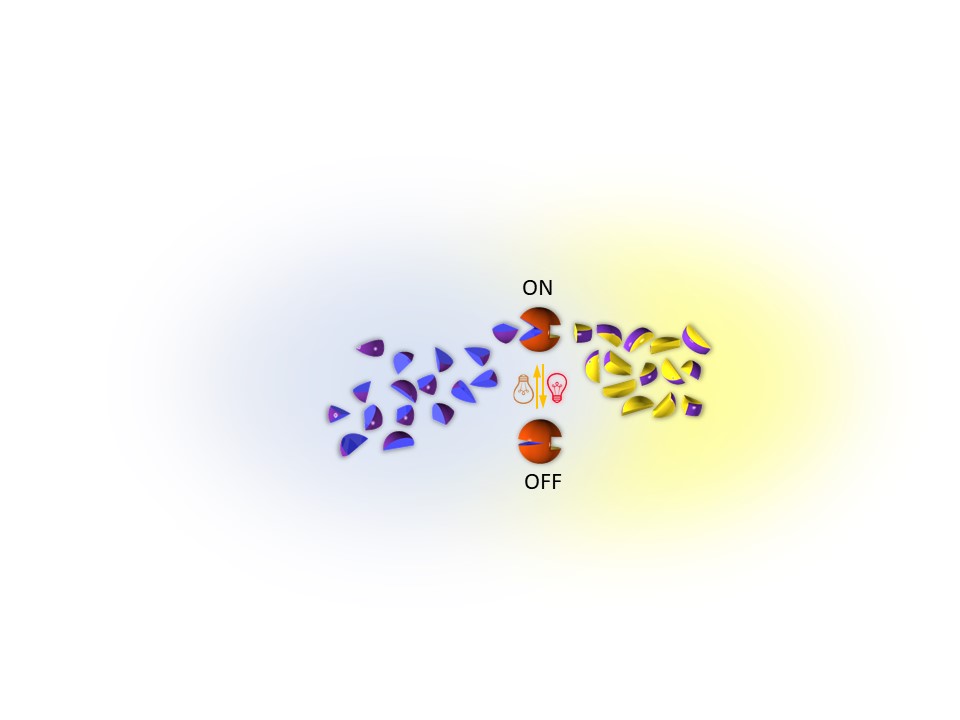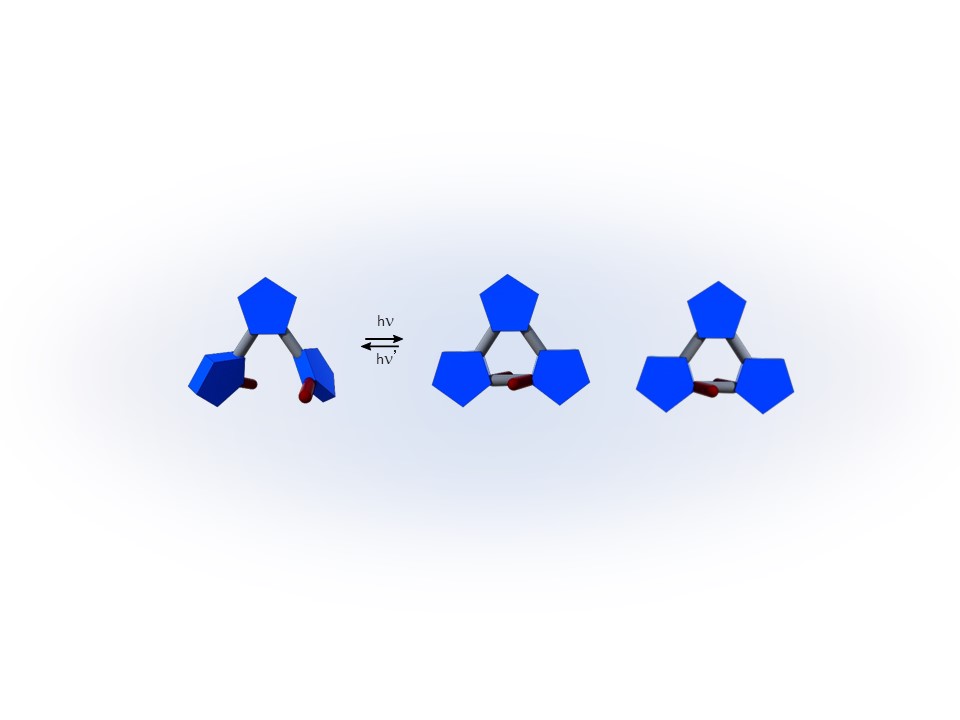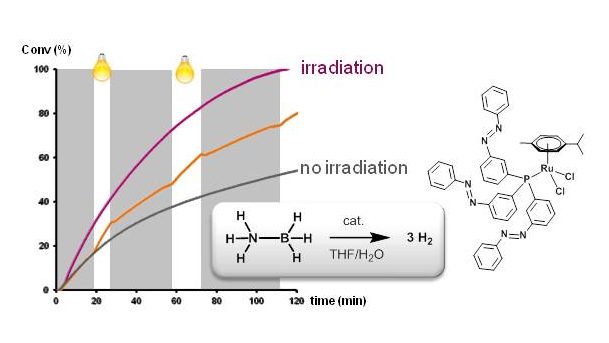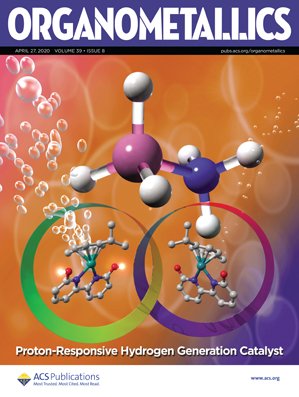RESEARCH LINE
-

 FREIXA's GROUPOur research line
FREIXA's GROUPOur research line -

 Photoswitchable catalysis
Photoswitchable catalysis -

 DTE-based photoswitches
DTE-based photoswitches -


 Fotoswitchable catalystsfor hydrogen generation
Fotoswitchable catalystsfor hydrogen generation -

 Azobenzene-based organometallics
Azobenzene-based organometallics -

 Chiral-at-metal organometallics
Chiral-at-metal organometallics -
 Reaction mechanisms: hydrogen generation
Reaction mechanisms: hydrogen generation -

 Reaction mechanisms:Imines hydrosilylation
Reaction mechanisms:Imines hydrosilylation
OUR RESEARCH LINE
The long-term goal of the research line that I pursue since I started my independent career is the development of light-tunable organometallic compounds for a wide range of applications, being catalysis the main focuss. After some initial explorative years, we have a set of synthetic tools to readily incorporate azobenzene derivatives in a wide range of compounds, and we are expanding them to the synthesis of DTE-based photoswitches.
Along these years we have synthesized more than 60 new azobenzene- and DTE-appended organometallic complexes, and studied them for several applications: iridium(III) triscyclometalated for phosphors in OLEDs, ruthenium(II) and iridium(III) half-sandwich complexes to be used as photoswitchable catalysts, are the first examples we worked on. In this area, our current challenge is the development of a new generation of compounds displaying photo-induced amplification of the chirality.
Additionally, in recent years we start working in the development of organometallic compounds as highly sensitive luminescent sensors for cations.
Expanding the range of compounds, and applications together with gaining a better understanding and control of their interaction with light is our daily task that should bring us through a path of amazing discoveries.
RESEARCH BACKGROUND (Z. Freixa)
After obtaining the Bachelor in Chemistry by the Universitat Autónoma de Barcelona (UAB) in 1994 Z. Freixa enrolled as PhD student at the group of Prof. J.C. Bayón. Within that period she spent 18 months at the University of Coimbra as contracted researcher, obtaining the PhD in Chemistry by the UAB in 2000. Afterwards, she moved to the University of Amsterdam where she spent 3 years as a postdoctoral researcher at the group of Prof. van Leeuwen (2001–2003). In 2004 she returned to Spain, joining the Institute of Chemical Research of Catalonia (ICIQ) as Ramón y Cajal fellow and Group Manager of Prof. van Leeuwen’s group. During that period (2004–2009) she co-supervised all the research projects of the group (both academic and industrial). The main focus was on Supramolecular Catalysis. After a short period as Lecturer at the University of Barcelona, in 2010, ahe accepted the position she is currently holding as Ikerbasque Research Professor at the University of the Basque Country (UPV-EHU).
Since she started her independent career, and always looking for new challenges in research, she drove her interest toward the development of photo-switchable organometallic complexes. The use of that stimuli-responsive entities in catalysis, to create photo-switchable catalysts is one of the most promising possibilities, but those unique compounds can also encounter many other fascinating applications. In our group we explore several of them, such as their use as phosphors for photoswitchable OLEDs, as sensors, as photo-sensitizers for solar cells, or as (photo-activatable)metalodrugs. The most relevant achievements in the different areas explored are:
Homogeneous catalysis: Together with Prof. van Leeuwen, we developed a unique ligand, SPANphos, which has been considered the first truly trans-spanning diphosphine ligand. Some of its organometallic complexes presented unique properties, as for instance extraordinary activity in methanol carbonylation processes (ACIE2003, ACIE 2005, OM 2005). More reently, we have also unravelled the mechanism operating in metal-catalyzed processes for the hydrogen generation by hydrolysis of amineborane adducts (ACS Cat. 2017) and imine hydrosilylation (Catal. Sci & Tech 2018), using half-sandwich ruthenium and iridium complexes. In collaboration with Dr. Huertos and Dr. Matxain, we identified a unique example of an organometallic catalyst that operates through hydrogen tunneling (ACIE 2022).
Supramolecular catalysis:Together with Prof. van Leeuwen we developed bifunctional ligands which permitted us to create large libraries of supramolecularly-build ligands, very effective in both nonenantioselective and asymmetric catalytic processes (ACIE 2007, JACS 2011). We also established, for the first time, the possibility to use ionic interactions as driving force for the construction of supramolecular catalysts (Chem. Eur. J. 2007, patent WO 2008031889 for BASF).
Photoswitchable catalysis:Very recently, we developed the first example of a photo-tunable catalyst for the generation of hydrogen by hydrolysis of amino-borane adducts (Eur.JIC 2010, Dalton 2017, Catal. Sci. Technol. 2020). Concerning the other areas of applications of photo-switchable organometallics,their potential use as metalodrugs or as photo-tunable phosphors, is currently being under study in collaboration with several specialized groups.
Luminescent sensors: In the last years, and as part of our participation in the NEXT collaboration, we are working on the development of luminescent sensors for cations (Nature 2020, Phys. Chem. Chem. Phys. 2021).
Últimos Posts
 PhD Day, Faculty of Chemistry UPV/EHU 2024 abril 20, 2024
PhD Day, Faculty of Chemistry UPV/EHU 2024 abril 20, 2024 PhD Ane I. Aranburu (31_3_2023) abril 16, 2023
PhD Ane I. Aranburu (31_3_2023) abril 16, 2023 Bachelor in Chemistry Graduation ceremony 2019/20 2020/21 agosto 16, 2022
Bachelor in Chemistry Graduation ceremony 2019/20 2020/21 agosto 16, 2022

